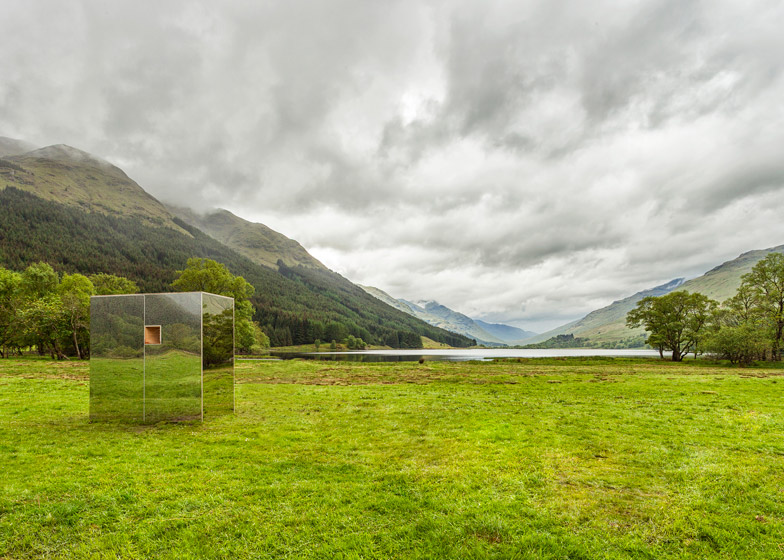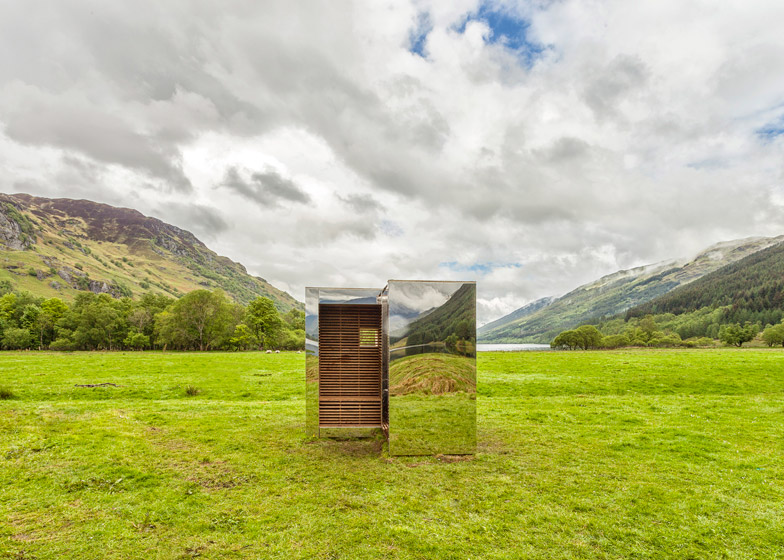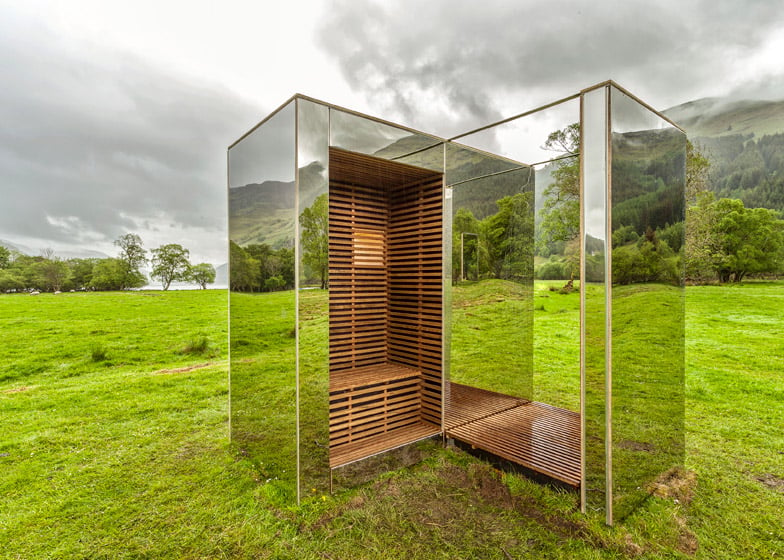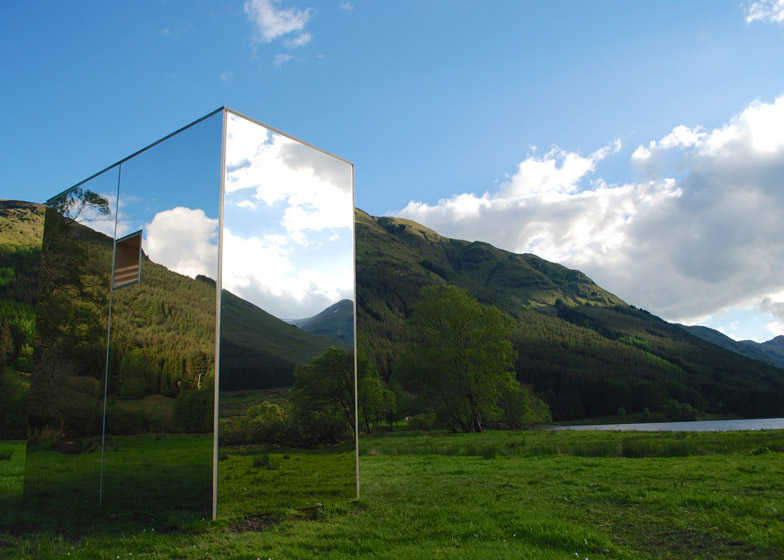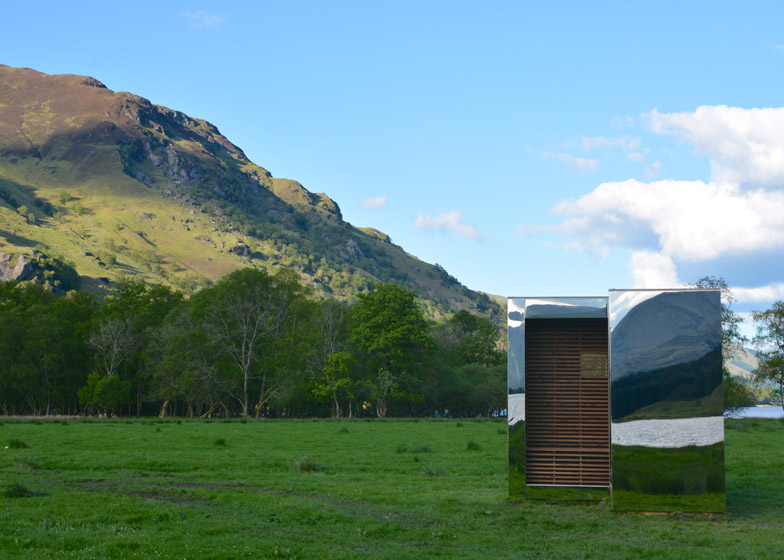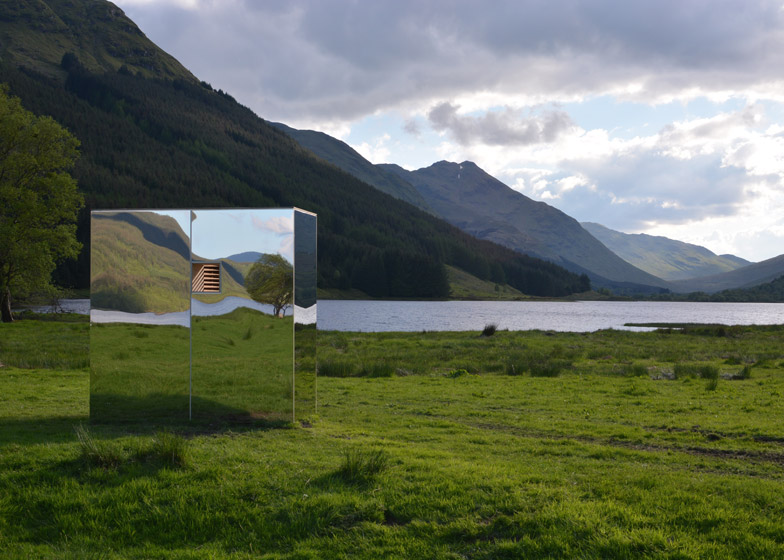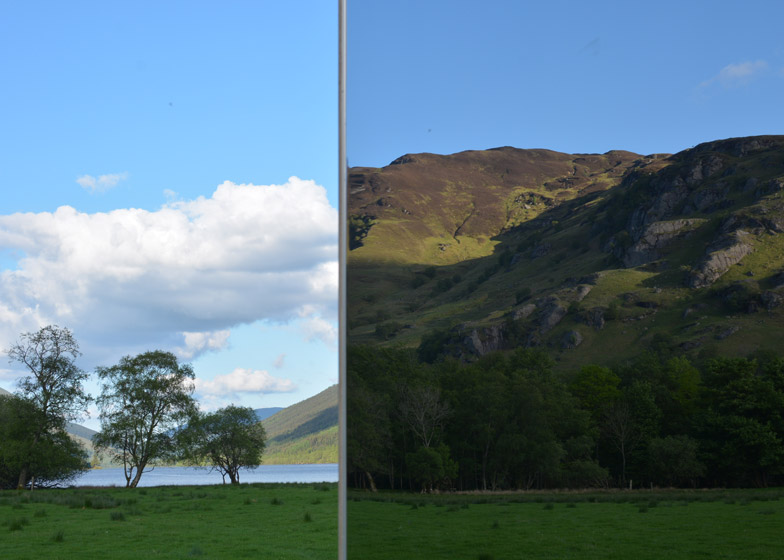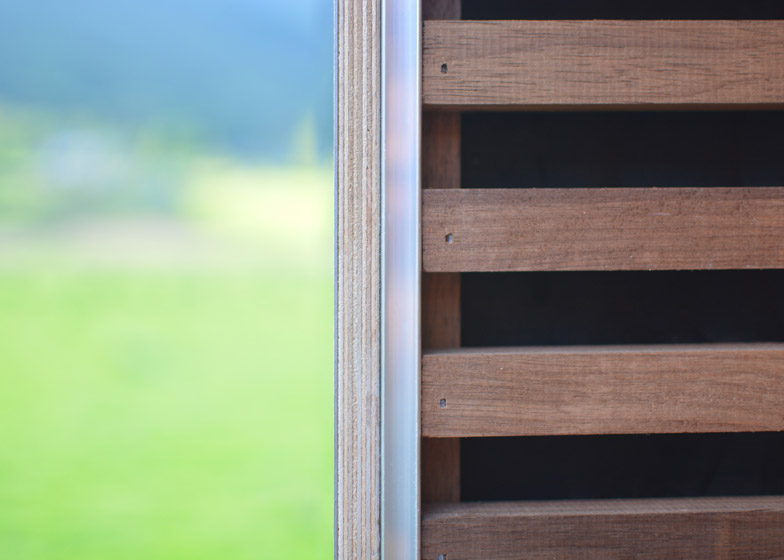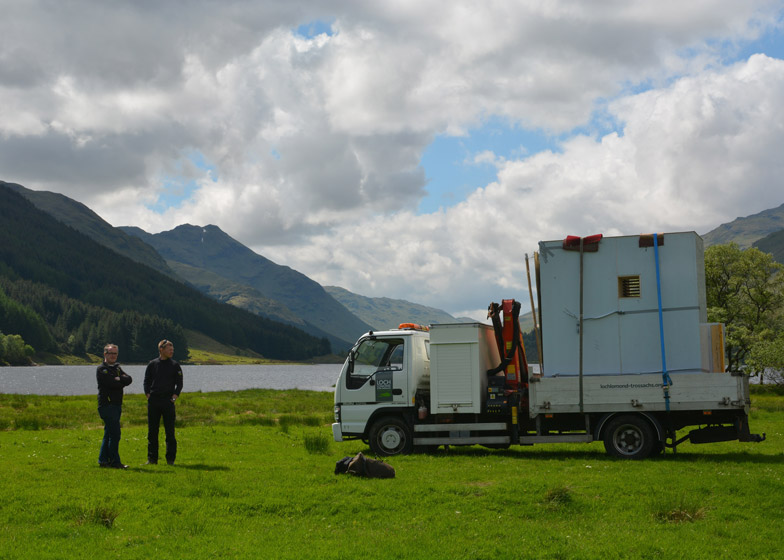Architecture students Angus Ritchie and Daniel Tyler have designed and built a mirrored lookout point in a Scottish national park that both frames and reflects views of the surrounding lochs and glens (+ slideshow).
Ritchie and Tyler designed The Lookout for a site in the picturesque Loch Lomond and Trossachs National Park during the final year of their studies at Glasgow's Strathclyde University.
To tie in with their thesis based on developing live projects alongside higher education, the pair executed the project as part of a government-funded programme organised by the Scottish Scenic Routes Initiative.
"The idea was to use a concept design from a first year room-with-a-view project selected by the national park at their final review," Daniel Tyler told Dezeen. "Angus and I took that concept and developed and realised the resulting Lookout. The main concept taken from the first year design was the mirrored material, which the national park was particularity keen on, and framing of three views."
With a budget of just £5,000, the architects designed a wood-framed pavilion with benches built into its different elevations to frame various views of the landscape.
Mirrored stainless steel was laminated to birch ply sheets then fixed to the lookout's exterior surfaces, creating shifting reflections that help the structure blend in with its surroundings.
The main cuboid-shaped volume features a void in its long facade that contains a two-seat bench looking towards a nearby loch, while another opening in the narrow end houses a smaller seat for one.
To reduce costs and minimise waste, the architects used standard panel sizes that determined the overall dimensions of the lookout.
"The design became a cube because of a rational approach to build-ability and the use of standard 2440 x 1220 millimetre sheet sizes," Tyler explained. "We then subtracted volumes from the cube to frame or direct the user's views."
A separate wall parallel to the main structure increases the number of reflective surfaces and multiplies views for visitors standing in the gap between the surfaces.
Views reflected in the mirrored surfaces are framed by the exposed edges of the plywood panels, while a hole inserted in the rear wall of the main seating space frames an alternative scene to the rear of the lookout.
The wooden structure was largely preassembled off-site. It was then lifted onto its shallow foundations by a digger before the metal cladding was applied.
The seating areas and external floor are made from a thermally treated African hardwood called frake, which was planed into square-sectioned battens to form slatted surfaces, in what the architects describe as "a Japanese style".
Other mirrored buildings completed recently include a visitor centre with reflective walls at a French ski resort and a 1950s house renovated by adding funhouse-style mirrors to its gable end.
Photography is by Daniel Tyler, except where stated otherwise.
Here is some more text from the architects:
The Lookout
The Lookout was designed and built by Angus Ritchie and Daniel Tyler as part of their Advanced Architectural Design thesis at Strathclyde University. The project was part of the Scottish Scenic Routes Initiative in conjunction with the Loch Lomond and Trossachs National Park and funded by the Scottish Government. The project also received sponsorship from MAKlab, Russwood and Gillrick Metalwork.
The Lookout sits within the landscape disappearing and reappearing from view as you move towards the object. Two seats, one for two, the other for one, frame views up Loch Voil and Loch Doine whilst a third view can be experienced through the reflections of the single vertical panel. The initial concept of a room with a view was realised over 2 months and built by hand by architecture students Angus Ritchie and Daniel Tyler.
The Lookout is a timber frame structure clad in mirrored stainless steel laminated to 12mm birch ply. Standard sheet sizes (1220 x 2440mm) were the kernel of the design as the small budget and concern for minimising wastage were paramount. The result is a 2440 x 2440 cube with volumes carved out to frame views and allow users to sit or stand. The edges of which are exposed, and treated, to frame the object in the landscape. The cladding for the seats is a Frake Hardwood, supplied and sponsored by Russwood, planed to 24x24 mm sections and assembled in a Japanese style.
Architects : Angus Ritchie and Daniel Tyler
Location : Balquidder Glen, Scotland
Collaborators: Darran Crawford, Boris Milanov, MAKlab, Russwood, Gillrick Metalwork, Strathcylde University
Client: Loch Lomond and Trossachs National Park
Budget: £5000

